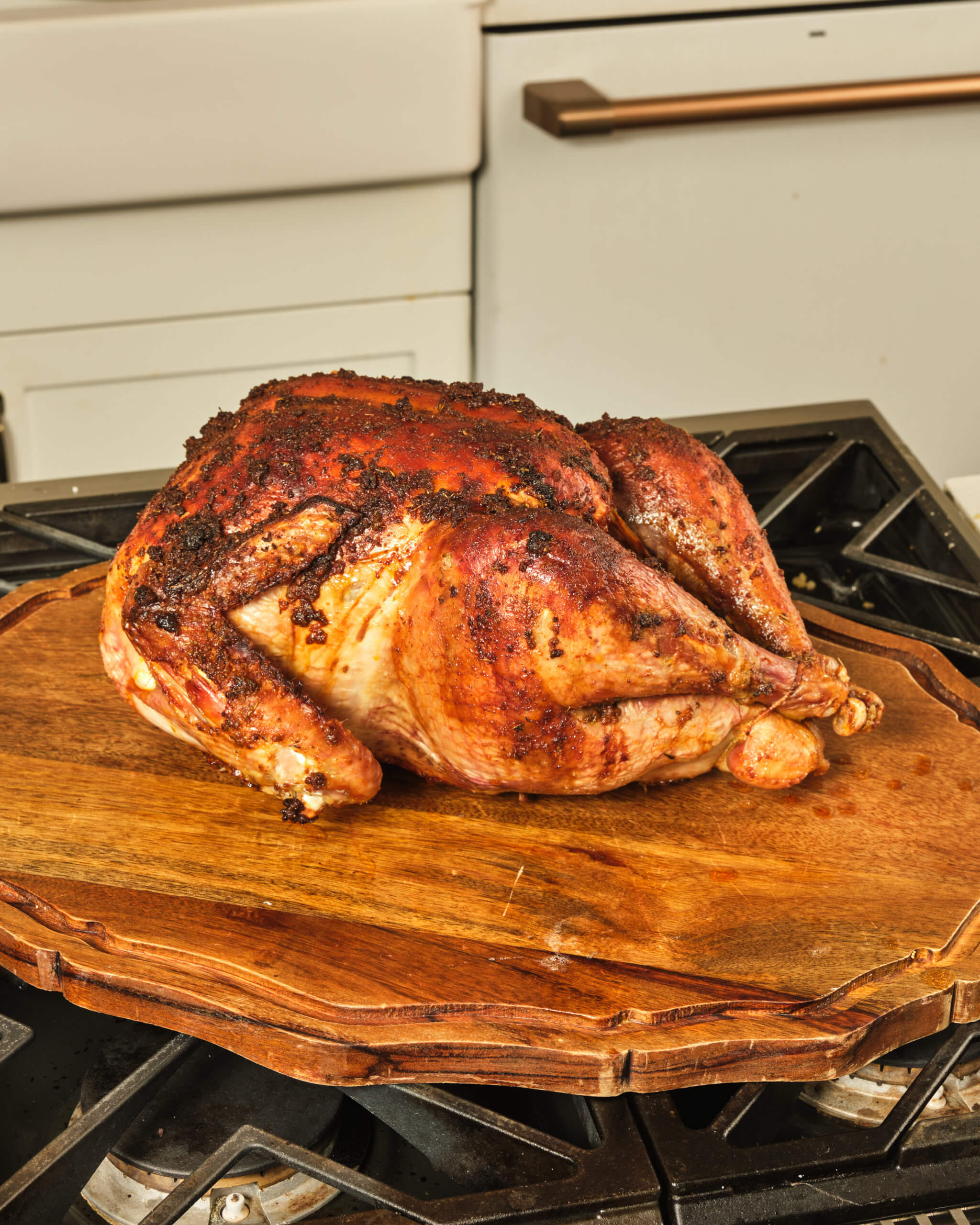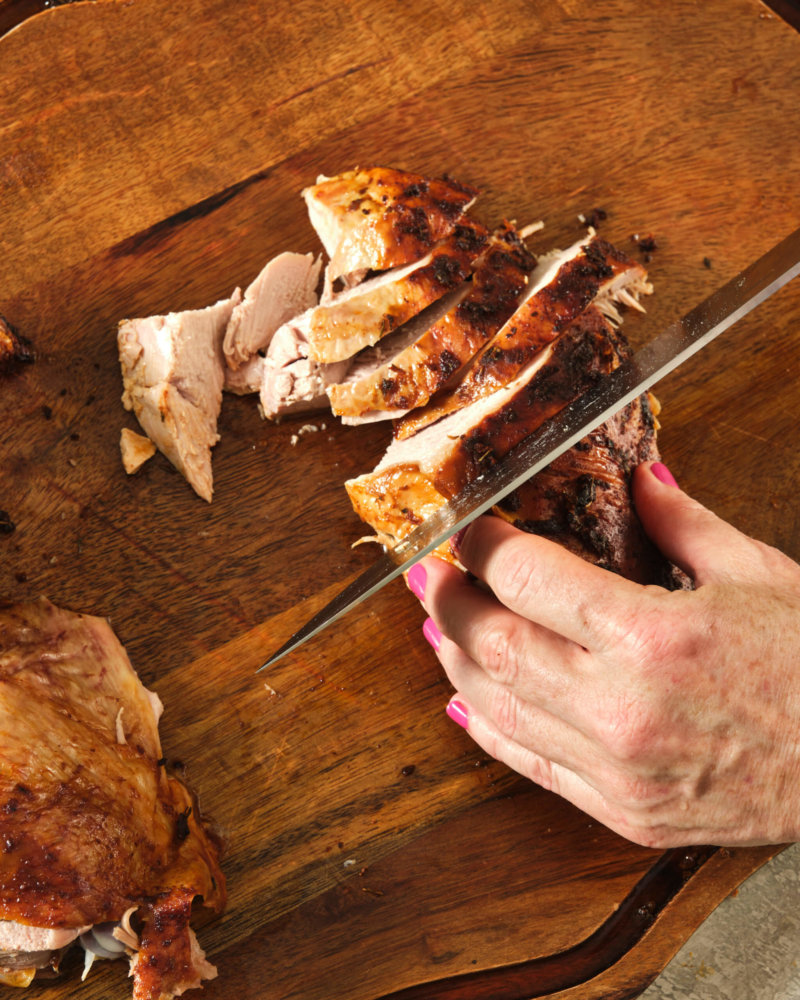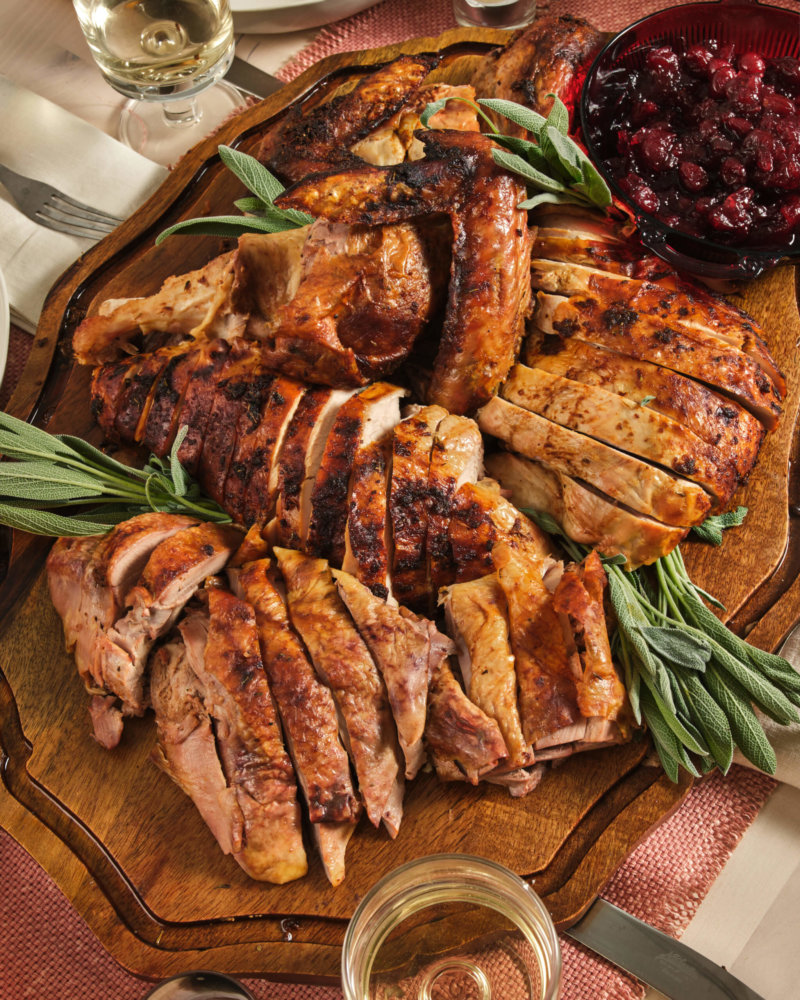Cajun Roasted Turkey
By Katie Workman, The Mom 100
About this Dish
“Even though my family is quite traditional when it comes to our Thanksgiving fare, this Cajun Roasted Turkey was a very welcome change of pace. It’s definitely still a classic turkey, with crisp mahogany skin and tender meat, but thanks to the seasoning rub it has a little Southern flair! Don’t just think of this Cajun Roasted Turkey for Thanksgiving! It would make a terrific centerpiece to any big gathering.” – Katie Workman, The Mom 100
Prep Note: The amount of rub is designed for a 12-pound turkey. Unless your turkey is significantly bigger, it should be sufficient. If your turkey is 18 pounds or more, make another half recipe of the Cajun butter blend.
Check out our recipe for gravy that will pair perfectly with your turkey!



Ingredients
4 tbsp paprika
2 tbsp kosher salt
2 tbsp garlic powder
2 tbsp onion powder
1 tbsp dried oregano
1 tbsp dried thyme
1 tbsp black pepper
2 tsp cayenne pepper
1/2 c (1 stick) unsalted butter, softened, divided
2 tbsp olive oil
1 12-pound turkey, preferably fresh, defrosted if frozen, giblets and neck removed and reserved for another use (see gravy!)
1 orange, halved
2 medium yellow onions, peeled and halved
1 c white wine (optional)
1 c chicken broth
Freshly ground pepper, to taste
Directions
In a small bowl, combine the paprika, salt, garlic powder, onion powder, oregano, thyme, black pepper and cayenne. Use a fork to squish in the softened butter and oil until completely blended.
Pat the turkey dry with paper towels. Rub the seasoned butter all over the bird, legs, thighs, breasts - everywhere. Carefully lift the skin where possible and work some of the butter underneath the skin. Do rub some inside the cavity of the bird. Place the turkey into a large plastic bag, preferably a sealable one, press out the air, and seal it tight. Place the turkey in a roasting pan, breast side up in the refrigerator for 24 hours.
After a day, and one day before Thanksgiving, remove the bird from the fridge and take it out of the plastic bag. Do not rinse the bird. Place the turkey in a rack in the roasting pan or on a plate, and refrigerate uncovered, for another 24 hours.
Remove the turkey from the fridge one hour before cooking to allow it to come to room temperature. Preheat the oven to 325°F. Place a rack in the lower third of the oven, and make sure you raise or remove the upper racks so the turkey can fit with room to spare on top.
Place the orange and onions halves into the cavity of the bird. Tuck the wings behind the back of the bird and place it in a rack in a roasting pan breast side up. Tie the legs closed (some birds have a cool little plastic gadget that holds the legs together, which will keep the cavity closed). Make sure the turkey is breast side up in the rack in the roasting pan, and place the pan into the oven.
Pour the wine and chicken broth into the pan around the turkey. Place the pan in the oven. After one hour, baste the bird with the juices from the bottom of the pan. Baste every 30 minutes from here on out until the turkey is almost done – then stop, to maintain the crispy skin.
Start checking after two hours with an internal thermometer, sticking it into the deepest part of the thigh, and making sure that it does not touch bone. The internal temperature should be 165°F. If as the turkey is cooking the top starts to get too browned just tent a large piece of tin foil over the top of the bird.
When the turkey is finished cooking remove it to a cutting board with a moat, tipping any juices that have accumulated in the turkey back into the roasting pan. Let the turkey sit, tented with foil, for at least 20 minutes.
While the turkey is resting, pour all of the liquid from the roasting pan into a large measuring cup. Put it into the fridge and when the fat has risen to the top, use a spoon to scrape off the fat and discard. You also can use a fat separator for this purpose. Use remaining drippings to make gravy (recipe linked above).
Carve the turkey and serve.
